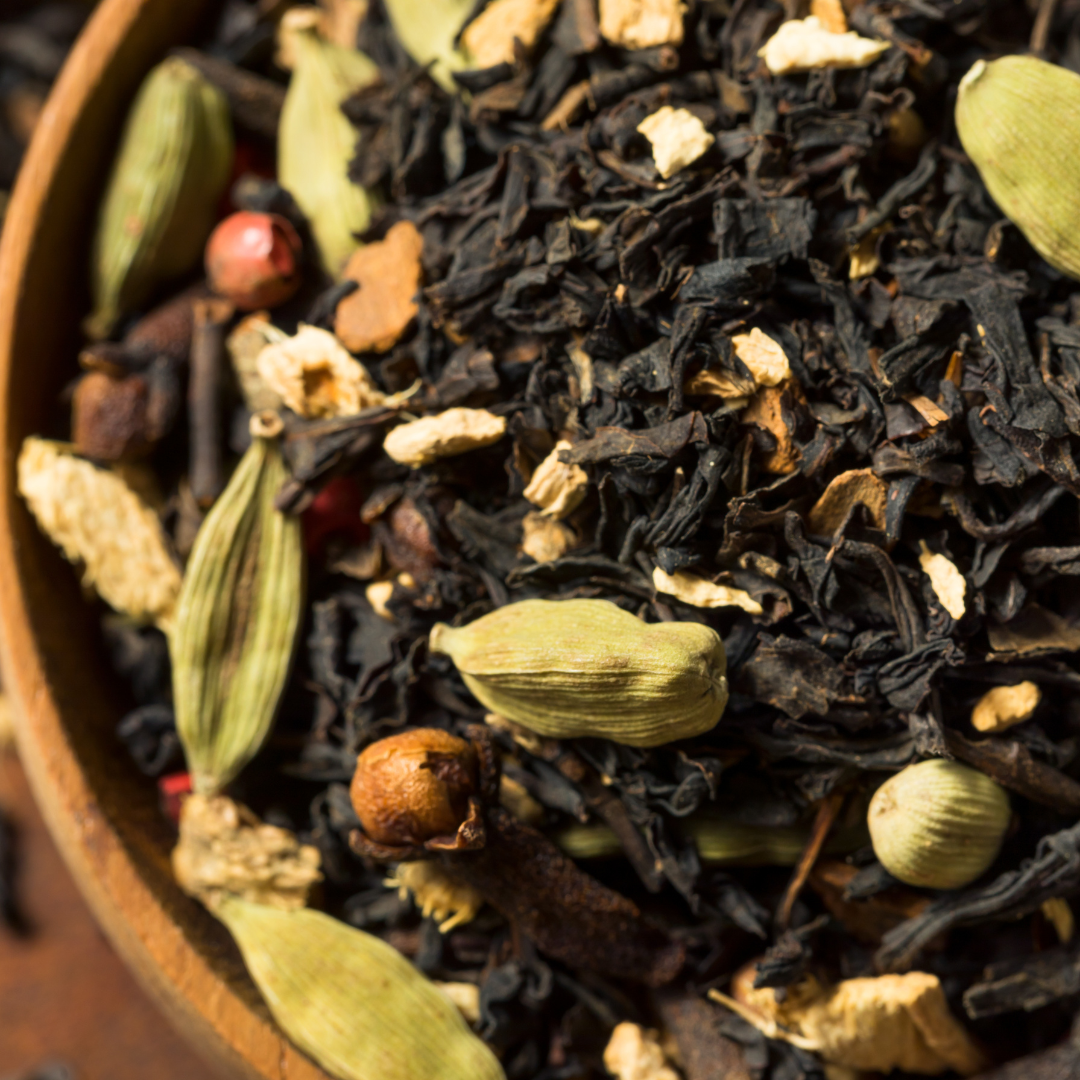Featuring Chai, Chai Again
Now that the days are darkening sooner, temperatures are dropping and lots of chilly, stormy days lay ahead, perhaps it’s time to start making hot tea again! And what about chai? The traditional method for making tea in India (chai literally means tea in Hindi), when you think of chai, you are probably most commonly thinking of Masala Chai, which involves simmering spices you usually associate with pumpkin pie (cloves, cinnamon, cardamom, nutmeg, black pepper and ginger) in milk with sugar and black tea. This tea is perfect as a light dessert after a large meal, as the various spices increase digestion and ease stomach distress and it’s also a wonderful staple for colder seasons as these same spices have a warming effect while packing an impressive number of antioxidants that help boost immune functioning.
Not a big fan of spices or milk based tea? Try these variations and you’ll soon discover your next favorite chai recipe in no time!
- Lebu Chai. Do you prefer iced tea? Then try this chai – straight from the streets of east India, this tea combines a pinch of black salt (also known as Kala Namak) with black tea, plus lime juice and a little sugar. If you can find Hajmola digestive tablets or candies, add those to this tea as well as Jaljira powder (which contains roasted cumin seeds) – altogether this infusion is a perfect after-dinner beverage to help aid in digestion, calm stomach acid and detoxify the blood.
- Sulaimani Chai. This tea also forgoes any kind of milk product and looks to lemon instead. Popular in the Northwestern Malabar region of India, it is believed that this tea was in part introduced by the Arabs who would trade along the Malabar coastline. Combine cinnamon, cloves, cardamom and ginger with black tea in water (instead of milk). If you’d like to add a pinch of saffron or some mint leaves for a refreshing kick, feel free to do so. Finally add an indulgent splash of lemon juice and your tea is ready! Sipping this also enhances digestion and is commonly available at wedding ceremonies where plentiful (and sometimes heavy) meals are often served.
- Kashimiri Kahwah. If you prefer green tea to black, this twist on the classic chai is for you. Born in the cooler Northwestern range of the Himalayan mountains, kahwah tea basically requires simmering green tea leaves with saffron, cinnamon, cardamom and occasionally rose petals. It is commonly served with sugar or honey and crushed nuts, usually almonds or walnuts. The green tea base of this infusion offers a plethora of antioxidants, plus it can help clear up inflammatory skin issues and reduce Type 2 Diabetes.
- Noon Chai. Not a big fan of spices? Try this twist instead. Also hailing from Kashmir, this well-known pink colored tea is often consumed two or three times a day by locals and is always made in a special copper pot called a Kashmiri Samovar. Begin by heating rolled green tea balls in water, then add a little less than a teaspoon of baking soda. Next add freshly crushed cardamon powder and brew until the water is a dark red color. Finally infuse your tea with milk and a dash of salt – it is often consumed with flatbreads (or roti), but sugar cookies or sweet biscuits are also a delicious combo.
- Tulsi Chai. If you’re looking for a caffeine-free alternative that won’t keep you up at night, try Tulsi. Also known as Holy Basil, this special herb has been revered in Indian culture for centuries, including in Ayurvedic medicine. It is considered an adaptogen, which means it helps the body adapt to stress and reduce cortisol, bringing a sense of calm and wellbeing when consumed. To make this tea, you’ll need cinnamon, green cardamom pods, star anise, and cloves along with fresh ginger. Orange Peel also compliments the natural minty, floral and peppery taste of the Tulsi. Try this before bed and you’ll be sure to get a good nights’ sleep!
- Chai Chai Again. Another excellent alternative to green or black tea is Rooibos. Cultivated in high altitude plantations not far from Cape Town, South Africa, this plant is also known as Red Bush in part from the lovely garnet color the leaves take on once they’ve been dried, which also seeps into hot water when simmered. Its slightly sweet, nutty flavor blends well with the spices so commonly associated with chai and like green tea, it is also packed with antioxidants which have protective benefits for the heart as well as reducing Type 2 Diabetes and certain types of cancer.
However you prefer your tea, perhaps these different twists on the classic chai will help widen your taste buds and make tea drinking more of an adventure – the perfect kind of adventure to partake in during a cold, stormy night. So get a kettle going and let the steeping begin!


